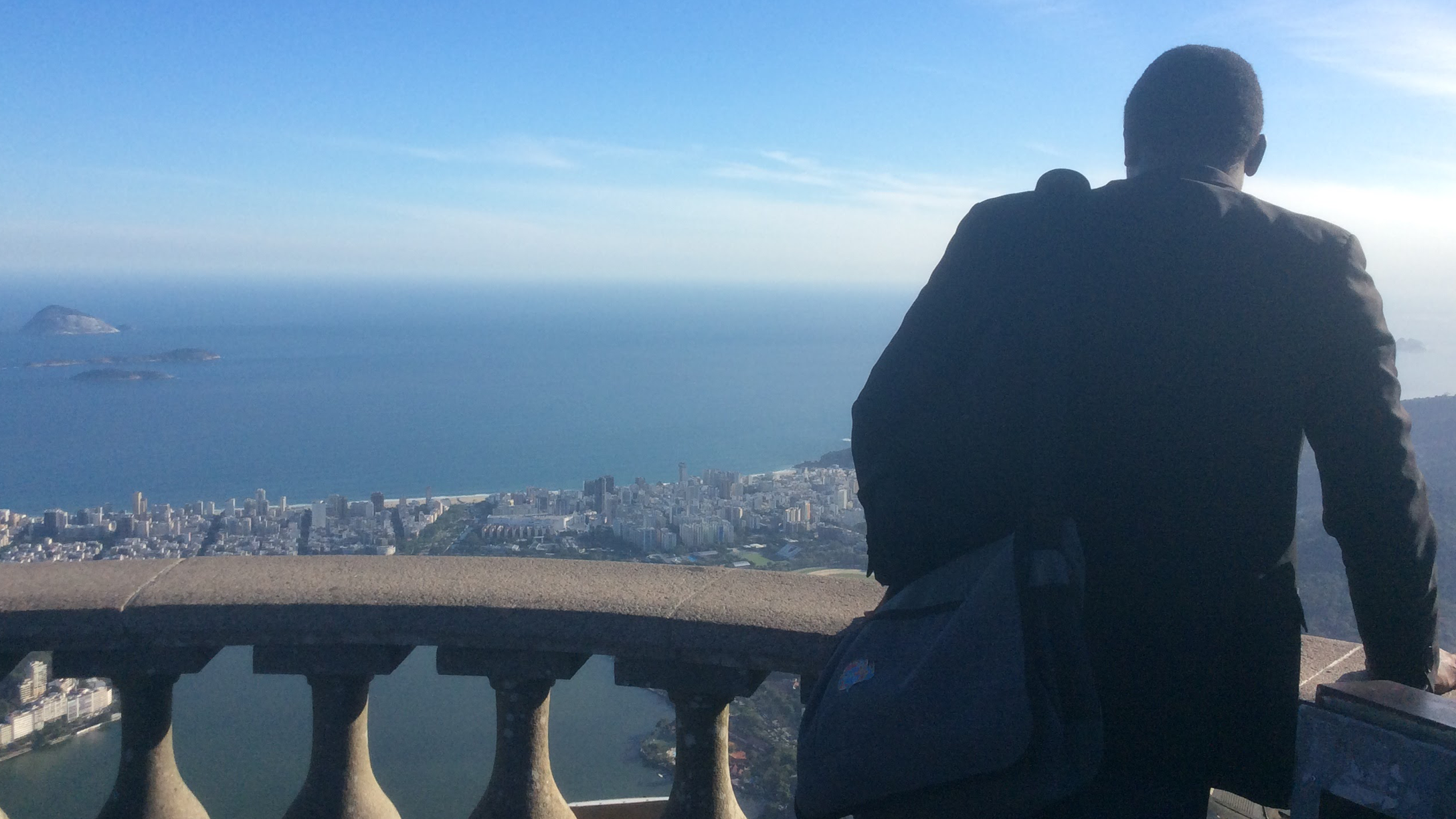Rio at night is magical, like Lagos might be to a foreigner with no knowledge of the difference between Ọbáléndé Under-Bridge and Lekki Phase 1 at nine pm. I had been told that it was equally as busy, as fun, and as dangerous. But as I had barely experienced any danger in Lagos, that was not saying very much.
It was 2017, and I’d come to attend a symposium on Artificial Intelligence and Inclusion. It was my first time in South America, and I arrived filled with curiosity, ready to soak in whatever came my way.
A half-hour ride on the VLT surface train whisked attendees to the symposium at the Museum of Tomorrow each day, affording a rich and familiar flow of city sights: elaborate Romanesque structures, plazas filled with sculptures of dead white men on horseback or striking regal poses. It might have been London, though painted in more diverse colours and moving at a far more leisurely pace, without a hint of haste or bustle—it might even have been Lagos, minus the Oshodi rush at five pm.
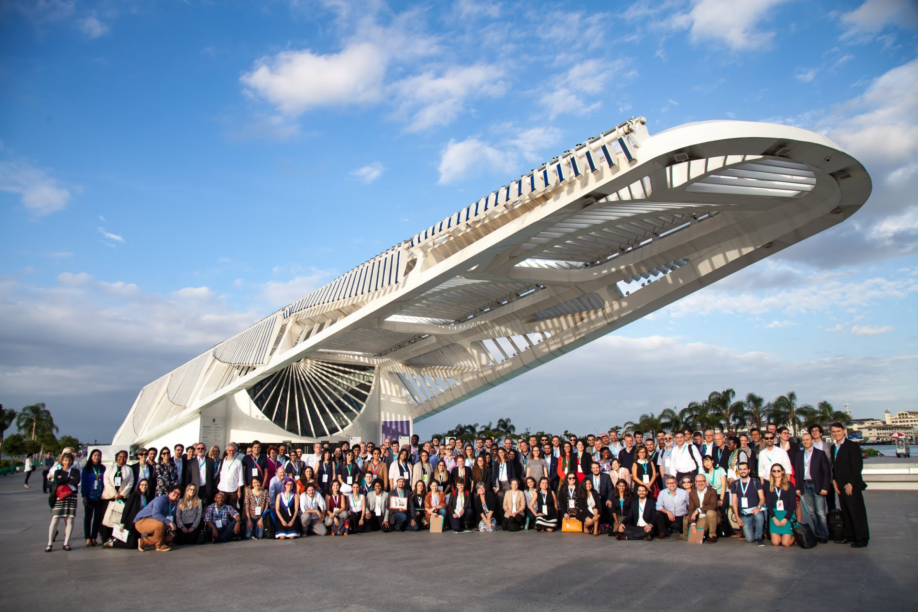 at the Museum of Tomorrow
at the Museum of TomorrowThe view from the warm safety of the train was not enough, though; I wanted to see more. Our conference hosts had ensured that we had just enough on our transit cards to attend the relevant events; a way, perhaps, of keeping us out of trouble. But on the last day of the symposium, my colleagues Ciira, Katerine, and I agreed to go and discover the city by ourselves. We were set upon daredevilry, eager to learn what Rio might offer an unfamiliar stranger.
At Cinelandia, every sight was an attraction: colourful flashing lights, a cluster of people gathered in a square with waving flags, the smell of roadside food or smoke, or a detachment of police eyeing us and the crowd with their hands warily around waist batons. We, travellers who had come from a continent away, now traipsing around this city’s evening veins, approached each sight like African moths to a South American flame, foolish and enthralled. We could not immediately tell a public protest apart from a party in the street, and the surrounding smells of coffee, coconut, fruit and food in the night air were inviting.
When we first emerged from the underground train, two Kenyans and a Nigerian, we carried with us the sweet exhilaration of having gotten away with it after all. We’d decided to visit Brazil’s most famous statue, among other pleasures. But to reach Christ the Redeemer, we’d had to load our VLT Metro card at a mobile vending point near the Cinelandia stop, speaking with our hands, mixed in with broken approximations of English and Spanish to signify a simple message: Help! We’re strangers. How do we get to Corcovado and back? Our fellow-travellers had been more than willing to help us navigate and pass through the gates, still while speaking no word of English. Their smiles bore no hint of the danger we’d often heard ascribed to Rio in news reports from the recently-concluded Olympics.
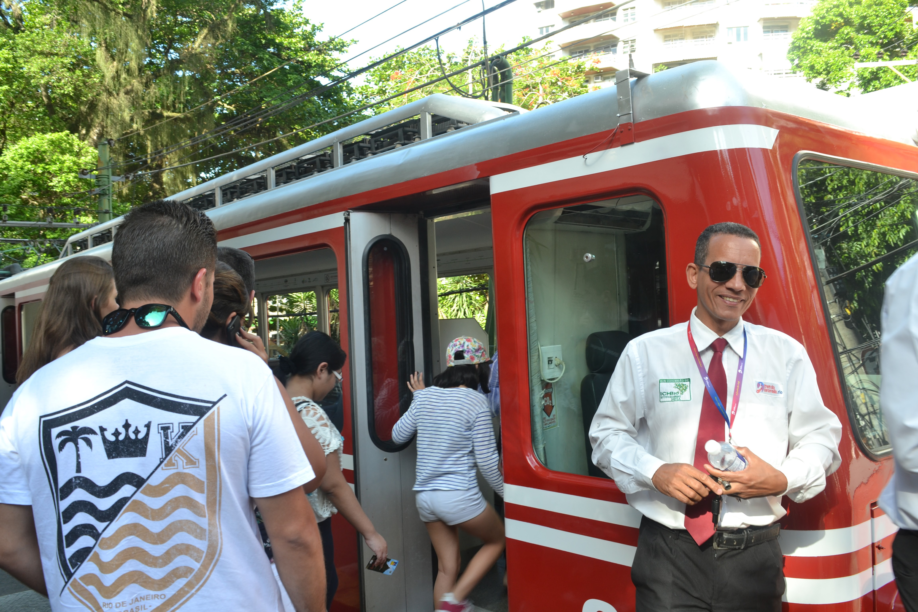
We found the vending machine. “Ẹ wòó”, I told the station attendant in Yorùbá, having finally realised the futility of our English. “Mo fẹ́ lọ sí Corccovado. Ní Christo Redentor. Kí la máa ṣe? A ò gbọ́ Portuguese o.” I gestured at the machine and to the card. “Èló ni? Báwo la ṣe máa ṣeé?”.
She took the card, put it in the machine, verified how much was in it and how much more we needed to add, and showed us how to pay. We were done in a few minutes.
Ciira observed that what came out of our mouths hadn’t mattered as much as our gestures did, helped along a bit with the keywords “por favor”, “Christo Redentor” and “obrigado”.
“This is lingua fracas, man,” I said to him. “Look at us gesticulating like stage mimes. We could as well have been speaking Klingon.”
“I like ‘lingua fracas’”, Ciira beamed. “Now let’s see if it gets us to Corcovado.”
How to get to Christ the Redeemer
- VLT up to Cinelandia Station
- Subway Stop is in front the VLT
- Get the Subway up to Station LARGO DO MACHADO. The EXIT is “B”
- The have a Ticket officer in front of the Main Exit B to go up to the Christ
With no competence in the local language, we had conquered the Corcovado Mountain, the tallest rock formation in Brazil, and site of the 38-metre Christ the Redeemer statue from where a panoramic view of almost all of Rio lay spread amidst rock formations like a litter of expensive toys.
The rich of this city live in the network of mansions at the foot of these hills, visible from each direction of the Statue’s outstretched arms. From here we could see Maracanã Stadium where Pelé had played, whence many World Cup matches had reached us via black and white television in the eighties. On another side of the hill was the riviera, with a collection of personal boats anchored on the bay, resting in the warm colours of November.
Eduardo Saverin, the co-founder of Facebook, moved here after renouncing his American citizenship in 2012—though, reportedly, NOT in order to avoid paying taxes on his newly acquired wealth ($3.84 billion at the time of the Facebook IPO). I wondered if he lived here, and which one of these boats might belong to him. Glenn Greenwald, Pulitzer-winning journalist, Edward Snowden’s partner and publisher, also lived here. If I was worth millions of dollars, I too might consider living here.
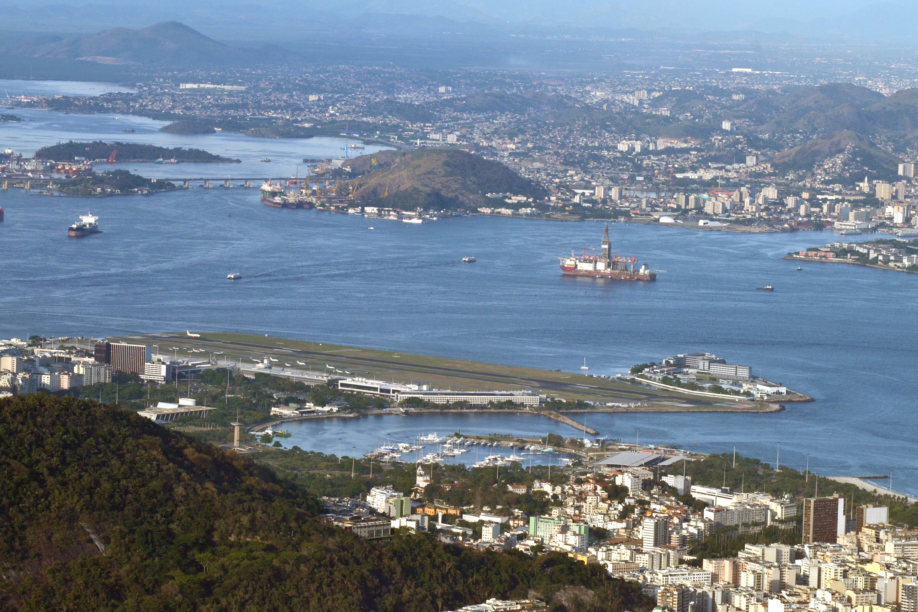
Later that night, in the restaurant Tic Tac Lanchonete at the intersection of Rua do Passeio and R. das Marrecas,we would finally face the consequences of our adventure.
The photographic menu made it easy to ask for an appetising orange juice in any language. You only had to point. But when the photobook menu had been taken away, and the two other black colleagues at the table attempted to say, “I’ll have what he had a few minutes ago, but apple instead,” difficulties arose.
Apple didn’t translate very well using hand gestures. When the waitress brought another orange juice for Ciira, his frustrated protestations in English went unappreciated.
“Try Swahili, Katerine.” I volunteered. It won’t matter anyway, but you’ll feel much better.”
She fumbled around for an apple sign. “Nilitaka juisi ya apple. Apple!”
“I don’t think that will help,” Ciira said.
The waitress expressed her misunderstanding back to us in Portuguese, and I added mine in Yorùbá, waving my head as a universal sign for “no” while pointing to my half-finished drink.
She went back and brought the drink menu.
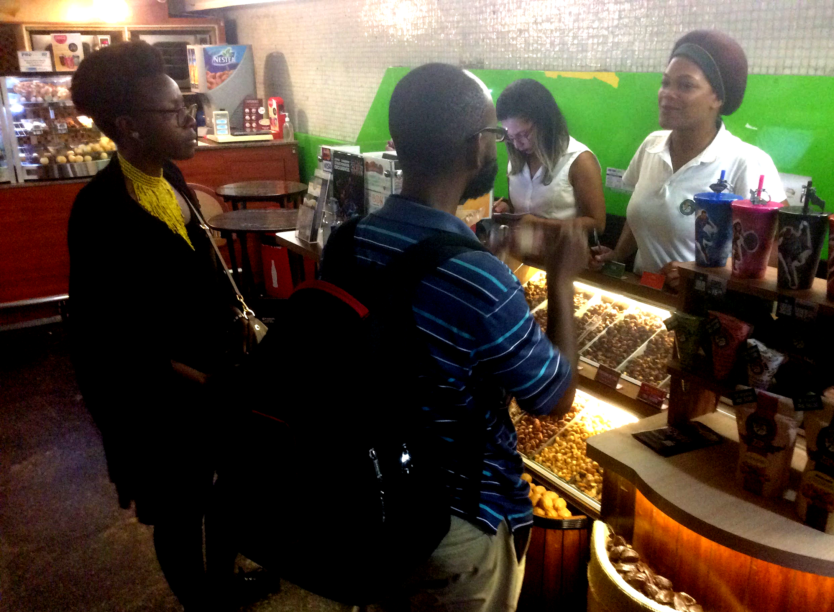
“I’d like to use the toilet,” Ciira said. “Should I ask her that in Kikuyu too?”
“The gestures are universal, aren’t they?” I replied. Then I caught myself. “Just don’t ask Kat to do it.”
We all began to laugh, surrounded by the sound of conversations bustling around us and through the evening.
Then there was a gunshot outside.
I couldn’t tell how many times it rang out, but the accompanying melee in the street told us clearly that something had gone badly awry. The restaurant immediately activated what seemed like a routine manoeuvre: the blinds came down, followed by the window rollers. Our contact with the outside world was reduced to the voice that prattled on from the television news.
The thrill we had sought had found us here at last with no escape.
Later we learned that the protesters we’d seen earlier, waving flags and complaining of corruption in the government, had been attacked by the police. All hell seemed to break loose while we were barricaded in the restaurant. We could hear panicked voices, and the solid smack of projectiles hitting walls outside the restaurant. Waiters passed nervously by to peek outside the door, as our worried giggles interrupted the television’s monotone..
“Kí ló ń ṣẹlẹ̀?” I blurted at a waitress, waving my hands towards the television and the shuttered windows.
“Manifestação,” she replied.
To me the word sounded clearly like “protest.” And though the only real language in the room was fright, it was eloquent.
When we found ourselves back on the street after a dinner filled with restless humour about our predicament, Rua do Passeio appeared as normal as it had been an hour before. People walked by as though nothing had happened, as though an international incident between Nigeria, Kenya, and Brazil had not just been narrowly averted.
This called for celebration.
At a street corner, with portable radio blaring, a young drinks vendor with his wares spread under black and green awnings sold mixed drinks to the strolling crowd. A young lady sat nearby in a blue tank top and short jeans miniskirt. Her hair covered much of her chest. The whole tableau had a tentative appearance, as if it could all be made to disappear at a moment’s notice, perhaps at the sight of trouble. If we’d spoken Portuguese, we could have asked exactly what had happened here just a few minutes earlier.
But for now, all we wanted was something cold and whimsical to take the excitement home. I asked the vendor for something uniquely Brazilian, and he was happy to oblige.
“Caipirinha, amigo?”
“I don’t know what that is, but I’ll take it,” I said.
It was my first time encountering the drink, Brazil’s most famous cocktail, but it won’t be the last.
How to make a Caipirinha (grapes and lime version)
- Put a few seedless grapes in a cup
- Add a few sliced limes
- Add sugar.
- Add ice.
- Mash and crush all up until all the juices are fully expelled and the ice is broken up.
- Add rum to fill up the rest of the cup.
- Stir.
- Hand over to the tall tourist speaking in a strange language.
Source: Street Observation on Rua do Passeio
Had the night ended before now, it might have been less magical. The taste of cold caipirinha in the company of new co-travellers through a night heavy with the smoke of street burgers and city restlessness gave the memory a distinctive, delicious charm.
The thirty minutes’ walk from Cinelandia back to the Prodigy Hotel snaked through heavy traffic, in a cool night air punctuated by the occasional sound of club music. The now-empty tracks of the VLT guided the night crawlers back towards their beds.
Suddenly we were in a quiet suburb near the hotel, the rum-fuelled creative retellings of our ordeal loudly reverberating in the night, until the red flashing lights of Prodigy Hotel appeared before us, like a night dancer welcoming us through the palm trees.

